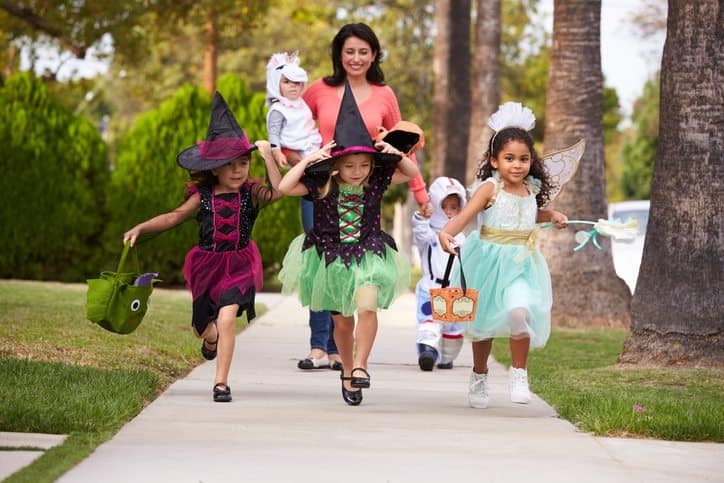Dental Tips For a Happy Halloween

With Halloween just right around the corner, the staff at Must Love Kids knows just how excited all of those little ghouls and goblins can get about trick-or-treating. However, Halloween can also cause parents to fret over a number of health and safety challenges. While one night of enjoying candy won’t do much harm, stockpiles of leftover Halloween candy can become troublesome if eaten continuously throughout the holidays, especially when combined with the sweet treats that always pop up around Thanksgiving and Christmas.
To keep your kids looking and smiling their best, here are a few tips for how you can help protect your kids’ oral health on Halloween and year-round from our team at our children’s dentistry in Vancouver.
Timing is Everything
While candy seems to make an excellent snack, the best time to suck on SweeTarts or nibble on chocolate-filled nougat is actually during or shortly following a big meal like lunch or dinner. The amount of saliva our mouths produce increases during larger meals. This additional saliva helps to neutralize the acids produced by harmful oral bacteria while also washing away food particles that would otherwise linger in the mouth after eating.
Avoid Snacking Sweetly
A bite-sized Snickers bar might seem like a nice treat for a child wanting a snack, but eating candy between meals can actually create havoc on your kids’ oral health. Snacking increases the risk of cavities, and the habit becomes even more problematic when selecting candy to satisfy those afternoon hunger pangs. Since snacking doesn’t trigger the mouth to produce extra saliva, a lot of residue sugar sticks to the surface of our teeth after eating candy. This excess sugar provides harmful oral bacteria that produce cavity-causing acids, which slowly erode away at tooth enamel.
Choose the Correct Candy
Avoid giving your kids hard candy and other types of sweets that spend a lot of time in the mouth. In addition to the amount of time you spend snacking, the length of time sugary foods remain in the mouth also plays a role in tooth decay and the formation of cavities. Unless your child is chewing on sugar-free gum, candies that stay in the mouth a long time – like Gobstoppers and Jolly Ranchers – before they dissolve increase the risk for tooth decay.
Stay Out of Sticky Situations
Sticky candies that cling to teeth after eating also present an oral health problem. The stickier candies – like gummy bears and taffy – take longer to get flushed out of the mouth by saliva. The longer these sticky substances remain in the mouth, the more time they have to provide harmful oral bacteria with the fuel needed to cause decay.
Plan for the Future
Depending on how successful your kids’ trick-or-treating outing goes, they could come home with enough candy to last for months. While the initial sugar high from their night’s work is fine, eating that much candy over the coming weeks can cause a serious sweet tooth in the form of cavities. But as Jimmy Kimmel has shown us, kids can have a hard time when it comes to separating themselves from their hard-earned candy. To prevent your kids from melting down, it’s important they know in advance that they won’t get to keep all of the candy they receive. Consider donating the candy or simply disposing of it.
Drink Plenty of Water
Drinking plenty of water, especially after eating candy, helps to flush out excess sugar that can remain in the mouth.
At Our Children’s Dentistry in Vancouver, We’re Here to Help
If you have any questions about the best practices for protecting your kids’ oral health during the holidays, feel free to just ask any member of our team during your next appointment at Must Love Kids.
And to all of the little Spider-Men and Wonder Women out there, we wish you a Happy Halloween!